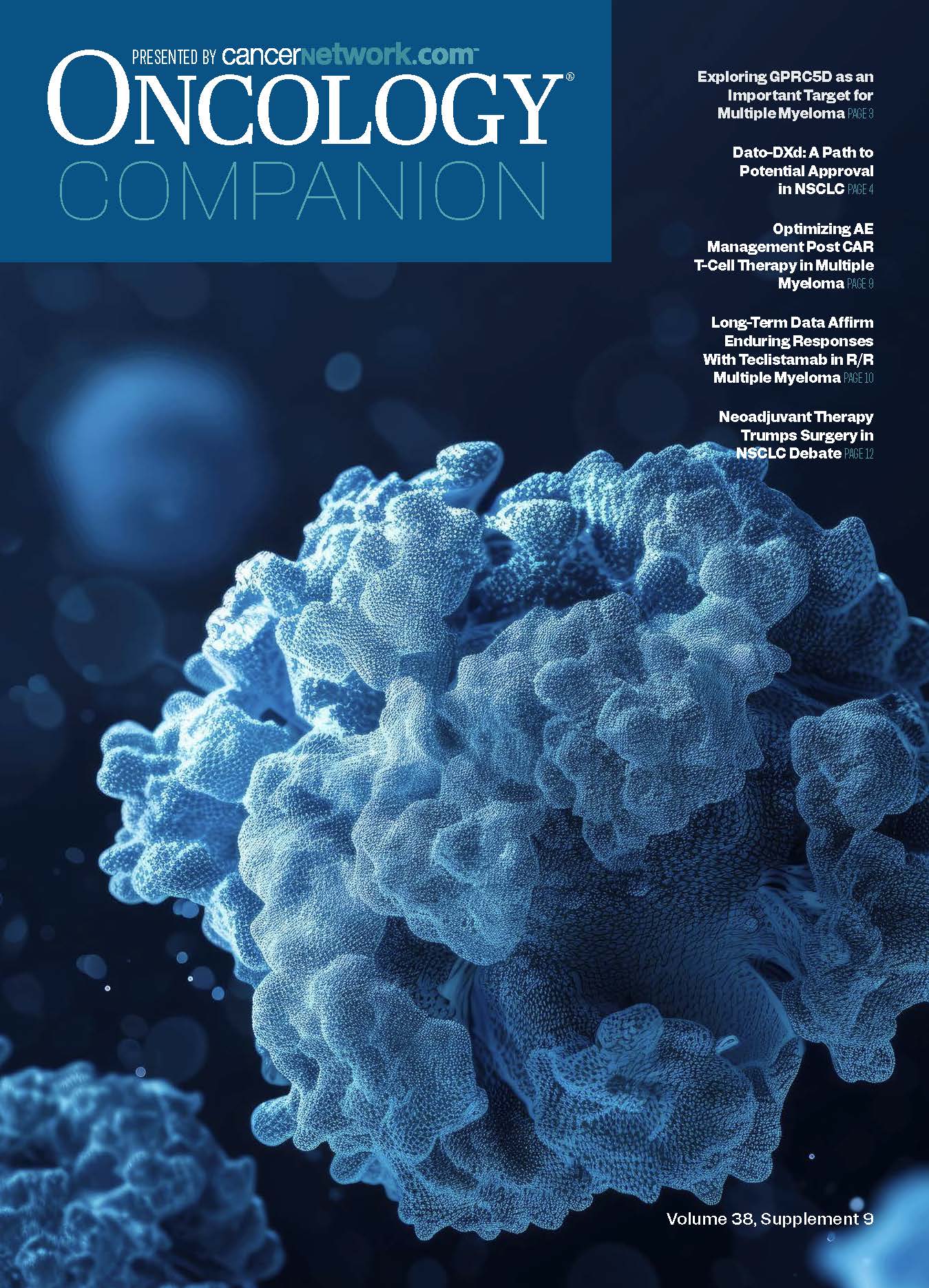Exploring GPRC5D as an Important Target for Multiple Myeloma
Publication
Article
ONCOLOGY® CompanionONCOLOGY® Companion, Volume 38, Supplement 9
Volume 38
Issue 9
Pages: 3
Experts highlighted the use of GPRC5D therapy in patients with multiple myeloma.
Meet the experts

A recent Training Academy highlighted the use of GPRC5D therapy in patients with multiple myeloma. The most common and only approved option is talquetamab-tgvs (Talvey). The panel highlighted the treatment in the phase 1/2 MonumenTAL-1 trial (NCT03399799; NCT04634552).
Using, Treating, and Sequencing GPRC5D Therapy
- An important target because there needs to be a range of options developed to treat multiple myeloma.
- This can be used prior to a B-cell maturation antigen (BCMA).
- Can be considered to be used as a bridge to a BCMA or chimeric antigen receptor T-cell therapy.
- GPRC5D is more commonly expressed in malignant plasma vs normal.
- Combination therapies may produce higher efficacy rates than these monotherapies.
- Talquetamab was assessed in the phase 1/2 MonumenTAL-3 trial (NCT05455320).
- The most common toxicities include oral and skin.
- Not as severe as with bispecific antibodies.
- Hypothesized, as this is given one treatment at a time vs continuous bispecific use.
- Dose de-escalation can be helpful to manage.
- Monthly treatment may be an option to help lessen or avoid dysgeusia.
- Talquetamab has not shown adverse effects (AEs) related to cardiac issues, pulmonary issues, renal issues, or neuropathy.
- AEs typically happen at first onset and then lessen as the disease becomes better controlled.
- As a GPRC5D target, there is less infectious toxicity involved.
- Intravenous immunoglobulin supplementation is not needed as much.
EP: 1.Significance of GPRC5D as a Target for R/R MM
EP: 2.Long-Term Follow-Up of MonumenTAL-1
EP: 3.MonumenTAL-1: Efficacy and Safety Data
EP: 4.Broader Implications and Current Trials of GPRC5D-Targeted Treatments in Relapsed/Refractory Multiple Myeloma
EP: 5.Overview of MonumenTAL-2 and MonumenTAL-3
EP: 6.Evaluating Combination Strategies in R/R MM: TRIMM-2, TRIMM-3, MajesTEC-3
Now Viewing
EP: 7.Exploring GPRC5D as an Important Target for Multiple Myeloma
EP: 8.Overview of RedirecTT-1, MagnetisMM-30 and MagnetisMM-5
EP: 9.Implications of Combination Regimens for R/R MM
EP: 10.Overview of Recent Updates in Bispecific Therapy in R/R MM
EP: 11.Impact of T-cell Affinity in Bispecific Therapy in R/R MM
Articles in this issue

Neoadjuvant Therapy Trumps Surgery in NSCLC Debate
Dato-DXd: A Path to Potential Approval in NSCLC
Optimizing AE Management Post CAR T-Cell Therapy in Multiple Myeloma
Long-Term Data Affirm Enduring Responses With Teclistamab in R/R Multiple Myeloma
Exploring GPRC5D as an Important Target for Multiple Myeloma
Related Content
Navigating AE Management for Cellular Therapy Across Hematologic Cancers
Tiba Al Sagheer, PharmD, BCOP, BCACP;Rebecca Gonzalez, PharmD, BCOP, FASTCT;Syeda Saba Kareem PharmD, BCOP
August 11th 2025Podcast
A panel of clinical pharmacists discussed strategies for mitigating toxicities across different multiple myeloma, lymphoma, and leukemia populations.